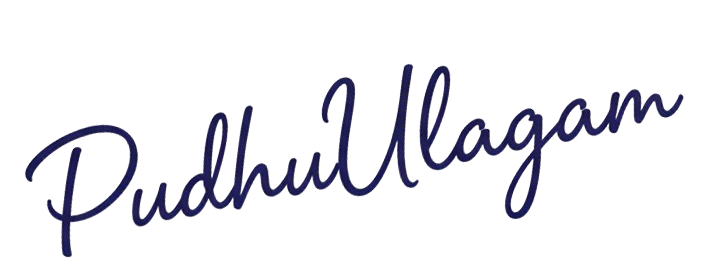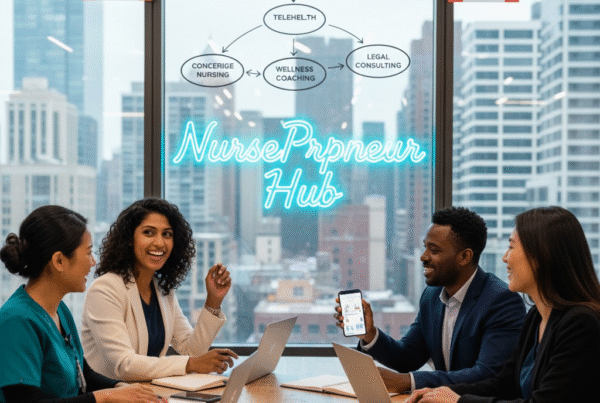I’ve never been a fan of cover letters. They always seem to pile on extra stress during the already exhausting and nerve-wracking job search process. Every time I sit down to write one, the same thought crosses my mind: Does anyone actually read these things?
As it turns out — yes, they do.
The good news is that writing a great cover letter doesn’t have to feel impossible. To figure out how to make the process smoother (and more effective), I reached out to Amy Gallo, editor at Harvard Business Review and author of “How to Write a Cover Letter.” She shared some valuable insights — from doing the right research and crafting a strong opening, to clearly showing the value you bring to the table.
With her expert advice, I was able to create a new cover letter that got her full approval. (Keep reading — I’ve included the example below for anyone who wants a tried-and-true, expert-backed template.)
Transcript :
JAMES: So, you’re trying to figure out how to write a cover letter? Trust me — I’m right there with you. I absolutely dread cover letters. Seriously, they’re my least favorite part of the job application process. But like it or not, they matter. So, it’s time for us to face the challenge head-on and finally learn how to write one that actually works.
Don’t worry — I’ve got your back. We’re going to walk through this step by step, and I promise it’ll make the whole thing much less painful. If you’re ready to conquer the cover letter once and for all, stick with me.
Right here, I’ve got three cover letters I’ve written for different jobs over the years… and honestly? I’m kind of cringing. Reading them now is so embarrassing — but hey, we all start somewhere, right?
To Whom It May Concern, to whom it may concern, to whom it may concern.
I’m writing to share my sincere interest in this opportunity and to formally submit my cover letter for your consideration.
I bring a strong mix of passion, precision, and dedication to everything I do. My attention to detail and enthusiasm for meaningful work drive me to deliver results that truly make an impact.
This version doesn’t even sound like me — it feels too formal, too stiff. Let’s be real: what I actually want to say is, just hire me already.
So, I reached out to Amy Gallo — yes, the Harvard Business Review editor and author of the viral article “How to Write a Cover Letter.”
AMY GALLO: Honestly, you’re not the only one who feels that way. I literally write about cover letters for a living, and I still don’t enjoy writing them myself.
JAMES: She’s done the research, spoken with all the experts, and figured out what really works — and now, I’m here to share her best advice with you.
Make it one page
JAMES: So, how long should a cover letter actually be? Just one page. Seriously — one.
AMY GALLO: And don’t try to cheat the system by shrinking your font to eight-point or stretching your margins. Keep it clean and readable. Focus on what really matters — the most important details that fit comfortably on a single page.
Do Your Homework — and Find a Name
JAMES: This might sound obvious, but let’s talk about it anyway. If you’re applying somewhere — say, at Harvard Business Review — start with some digging. Check the company’s website, read their “About” section, learn about their mission, tone, and values. You want to understand not just what they do, but what they care about.
Once you’ve got the big picture, go deeper. Look at their LinkedIn, their X (Twitter), and any other platforms they’re active on. See what topics they’re discussing, what projects they’re promoting, and who they’re engaging with. That’s how you get a feel for what’s current and relevant.
And here’s a big one: find out who the hiring manager is. It always makes a better impression to address your letter to a real person instead of a generic “To Whom It May Concern.” So, yes — sometimes you’ll have to do a little online sleuthing.
AMY GALLO: Absolutely. A little “professional creeping” is part of the job search. LinkedIn can be super helpful — often, the person who posted or shared the job is connected to the hiring process. Even if you’re not 100% sure they’re the right contact, addressing your letter to them feels far more personal. And if you’re uncertain, don’t be afraid to reach out and ask directly, “Hey, who’s the hiring manager for this role?” It shows initiative — and that goes a long way.
JAMES: Let’s be honest — most cover letters start the exact same way: “Hi, my name is ___, I live in ___, and I’m applying for ___.” Nope. Stop right there. That’s the fastest way to blend in with every other application sitting in the hiring manager’s inbox. You need an opening line that actually grabs attention. Amy, help us out — what does a strong start really look like?
AMY GALLO: Go ahead and steal this one — it’s meant to be shared:
“When I saw your job posting on [site], I was genuinely excited. It’s exactly the kind of opportunity I’ve been hoping for — one where I can use my experience in [specific skill or area] to make an impact.”
The key is to keep it short, confident, and focused. Show genuine enthusiasm and connect it to the skills or experience that make you right for the job. That’s how you hook them from the first line.
JAMES: Every company hires to solve a problem — that’s where you come in. Before you start writing, take time to figure out what challenge they’re facing and how you can help fix it. Amy pointed out that employers consistently look for two main traits: adaptability and the ability to learn fast.
But here’s a common worry: What if I just graduated and don’t have years of experience? How do I write a cover letter that still stands out?
AMY GALLO: Great question — and here’s the thing: your cover letter isn’t about your past, that’s what your résumé is for. The cover letter is about your future — how you’ll take what you’ve learned so far and use it to contribute to what’s next.
Show enthusiasm — without overdoing it
JAMES: This part’s tricky. You want to sound excited about the job and eager to join the team — but not desperate. There’s a fine line between genuine enthusiasm and coming on too strong.
Get someone else to review it
AMY GALLO: Once you’ve written your draft, share it with someone who knows you well and will be honest. We’re often too close to our own writing to spot awkward phrasing or unclear points.
JAMES: A second pair of eyes can catch typos, grammar mistakes, or even help you figure out if your tone feels authentic and confident.
Streamline the process
JAMES: Okay, Amy — this all sounds like a lot of work. Is there an easier way to manage this when I’m applying to several jobs at once?
AMY GALLO: You’ve probably heard it before — job hunting is a full-time job. But you don’t need to start from scratch every time. Create a solid base cover letter for your first application. Have someone review it for tone and clarity. Then, for each new job, tweak the details — personalize the intro, adjust the examples, and align it with the company’s mission.
JAMES: That actually feels doable.
So, my challenge now is to apply for a position here at pudhuulagam.com and write a fresh cover letter using Amy’s advice. It’s not easy — I won’t lie — but it’s already way less painful than how I used to do it.
The First Draft
Dear Maureen and the Hiring Team,
I came across your job posting on LinkedIn and immediately felt excited — this is exactly the kind of opportunity I’ve been searching for. It perfectly aligns with my background in video production and project management, and I’m eager to bring my experience to the Creative Center to help produce standout, engaging content.
My time working in both news and film production has taught me how to take an initial concept and turn it into a polished final piece — from brainstorming and scripting to coordinating shoots and managing post-production. I’m proficient in Adobe Creative Suite and TriCaster, and I thrive in collaborative environments where ideas move quickly and creativity is at the forefront.
Joining the Creative Center would allow me to keep growing as a producer while helping streamline production planning, manage content efficiently, and contribute to fast, high-quality video delivery.
AMY GALLO: You nailed the length — short, focused, easy to read. The opening line is strong, but then it starts to sound a little stiff and drifts into résumé territory. I’d love to see a bit more of you in there — more voice, more personality.
JAMES: Oh wow. Okay, I can fix that.
The Final Draft
JAMES: So, Amy — after all the revisions and tweaks, what do you think?
AMY GALLO: I’m looking at it now, and honestly, you did a great job. You’ve included everything that matters — personality, confidence, and a genuine connection to the company — without going overboard. It’s balanced, warm, and professional. If this landed on my desk, I’d absolutely want to bring you in for an interview.
JAMES: That’s such a relief to hear! I actually did it — I wrote the cover letter, and you just watched the whole journey. It wasn’t easy, but I finally understand how to approach it with a lot less fear and a lot more focus. These things take practice, so keep at it. Rewatch, rewrite, and refine — every time it gets a little better. Good luck out there — you’ve got this.
Dear Maureen and the Hiring Team,
When I came across your post on LinkedIn, I couldn’t help but get excited — this role feels like the perfect blend of my skills in video production and my passion for creative storytelling. The chance to contribute to an organization that defines excellence in leadership and management content is exactly what I’ve been looking for.
With over five years of experience across broadcast journalism, research, and video production, I bring both a creative and strategic mindset to every project. I think of production as a puzzle — every detail, from planning to post, fits together to create a cohesive story. I like to start with meaningful conversations with team members and stakeholders to clarify goals, logistics, and resources — setting the stage for a smooth, successful shoot.
Once the groundwork is done, I love diving into the creative process — shaping ideas, building storyboards, and finding visuals that make concepts come alive. Collaboration is key for me; I value working with diverse voices and fresh perspectives that elevate the final product. I also draw inspiration from outside media like magazines and short films — anywhere great storytelling is happening. This curiosity and openness have helped me grow both in the film industry and as a creative professional.
You can find examples of this work on my website, where I’ve showcased projects that blend creativity, organization, and audience engagement.
I was especially excited to see Harvard Business Publishing’s Patient Zero simulation in action at my current workplace. It was smart, dynamic, and surprisingly engaging — proof that learning content can be both educational and genuinely entertaining. That’s the kind of storytelling I want to be part of.
I would be thrilled to discuss how my background and enthusiasm can contribute to your team’s ongoing success. Harvard Business Publishing is my top choice because your mission aligns so strongly with my own approach to storytelling and education.
Thank you for considering my application — I’d love the chance to talk further about how I can add value to your creative projects.



Meta Platforms Stock & Earnings: Complete Guide (2025 Best Update)